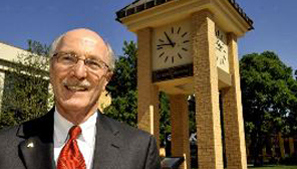I’m going to set aside my bias in favor of downtown Amarillo’s proposed multipurpose event venue for a moment … or maybe two.
Instead, I want to offer high praise for the apparently strong interest in the upcoming election.
The MPEV is on the citywide ballot Nov. 3. It’s a non-binding referendum that will ask voters if they want to proceed with an MPEV that includes a ballpark component.
You know my feelings on it. I’m all in on the proposed $32 million project. I have favored it from the beginning.
But the point here is that the early portion of the early vote seems to suggest a greater-than-normal interest in this issue.
On one hand, that’s not saying much, given the pitiful, abysmal and disgraceful turnout percentages that usually greet municipal elections in Amarillo.
We elected a City Council this past May with a turnout that barely cracked double-digits. And yet the winners all declared some kind of mandate for change. I don’t buy the mandate part.
Yes, I honor and respect the results, as they reflected a majority of those who turned out. The reality, though, is that it was a majority of a tiny minority of those who not only were registered to vote, but who were eligible to vote. When you factor in the voter eligibility number, the percentage of turnout plummets even further.
The early turnout for the MPEV vote appears to be bucking the norm in Amarillo, where folks traditionally have let others decide these issues.
This morning I happened to ask Paul Matney, the retired Amarillo College president who’s now co-chairing the Vote FOR Amarillo effort to win an MPEV endorsement at the polls about the early surge in turnout.
He offered a couple of ideas. One is that it might be a backlash against some of the negativity that’s been occurring at City Hall. He wonders whether voters might be saying they’ve had enough of the back-biting that has accompanied the three newest council members’ involvement in public policy discussions. Voter might not be necessarily in favor of the MPEV, but they want to send a message to City Hall that they’re sick and tired of the negative commentary, Matney wondered.
He also wonders whether there’s an actual positive turnout in favor of the MPEV … or if there’s the reverse taking place, that voters are expressing genuine anger.
He shrugged today and said, “I just don’t know” what’s driving the turnout.
Whatever the case, both sides of the divide have said the same thing: Be sure to vote. Make your voice heard. Speak out with your ballot.
That’s wise advice, no matter how you feel about the MPEV.





